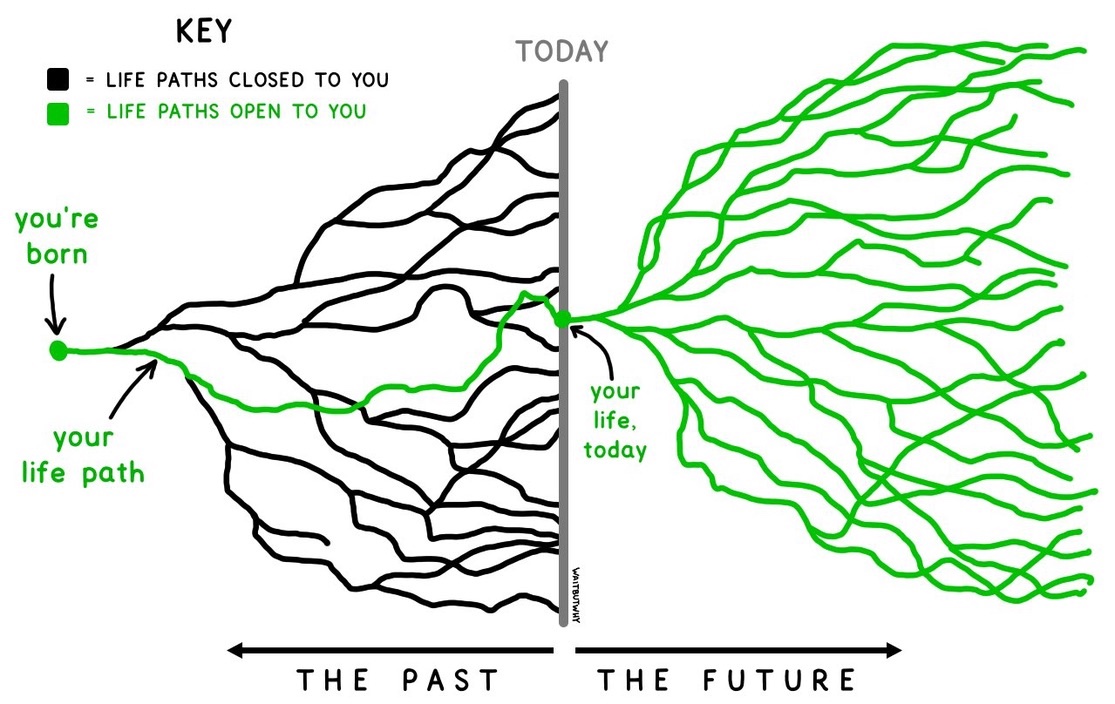The experiment roadmap
 The experiment roadmap. This image has become popular on the web.
We're taught to do the lowest fidelity test on your idea, especially for startups. But what's often forgotten is to watch out for false-negative signals.
The experiment roadmap. This image has become popular on the web.
We're taught to do the lowest fidelity test on your idea, especially for startups. But what's often forgotten is to watch out for false-negative signals.
Why is it important? You give up on ideas because of a false-negative if you try just one experiment.
When you test an idea (with paper, pen, and some people). It's one branch in the picture. One experiment.
When you get negative results, it means that single path. The precise way you presented it, what the user did, and how it responded to them won't work.
But if you alter anything from start to end, it becomes a new experiment. A new idea.
What activities you do and the exact sequence you do them is called the value chain. Why is this important? See Michael Porter's explanation from Harvard Business School
The sequence of activities your company performs to design, produce, sell, deliver, and support its products is called the value chain.
Rivals will copy and follow. But they won't be able to deliver your value without changing their own path, rewind, and alter how they create value.
The paths they've taken are sown into their identity, who they are, and what they stand for. Changing this, like people, will be hard, if not impossible." ps. Shreyas Doshi this was such a big a-ha moment. Thank you for your recommendation of Understanding Michael Porter.
So how do you follow an experimental roadmap?
You fall in love with the problem.
Validate it and make it your starting point.
You don't care about the solution and trust the process.
You run experiments until you figure out what hits just right, and they say, yeah, I want that. I need that. That's your product-market fit.
Follow the branches, and the solution will emerge.